Complete Solutions to Exercise Single Correct of chapter VECTORS of Class 11 book with complete answers and questions
| Class 11 | PHYSICS |
| Chapter | VECTORS |
| CENGAGE PHYSICS | Exercise Single Correct |
| Number Of Questions | 51 |
| Academic Year | 2023-24 |
The sum and diffrence of two perpendicular vector of equal length are
02:08View SolutionThe minimum number of vector having different planes which can be added to give zero resultant is
02:18View SolutionA vector perpendicular to `hat(i)+hat(j)+hat(k)` is
03:24View SolutionFrom figure the correct relation is
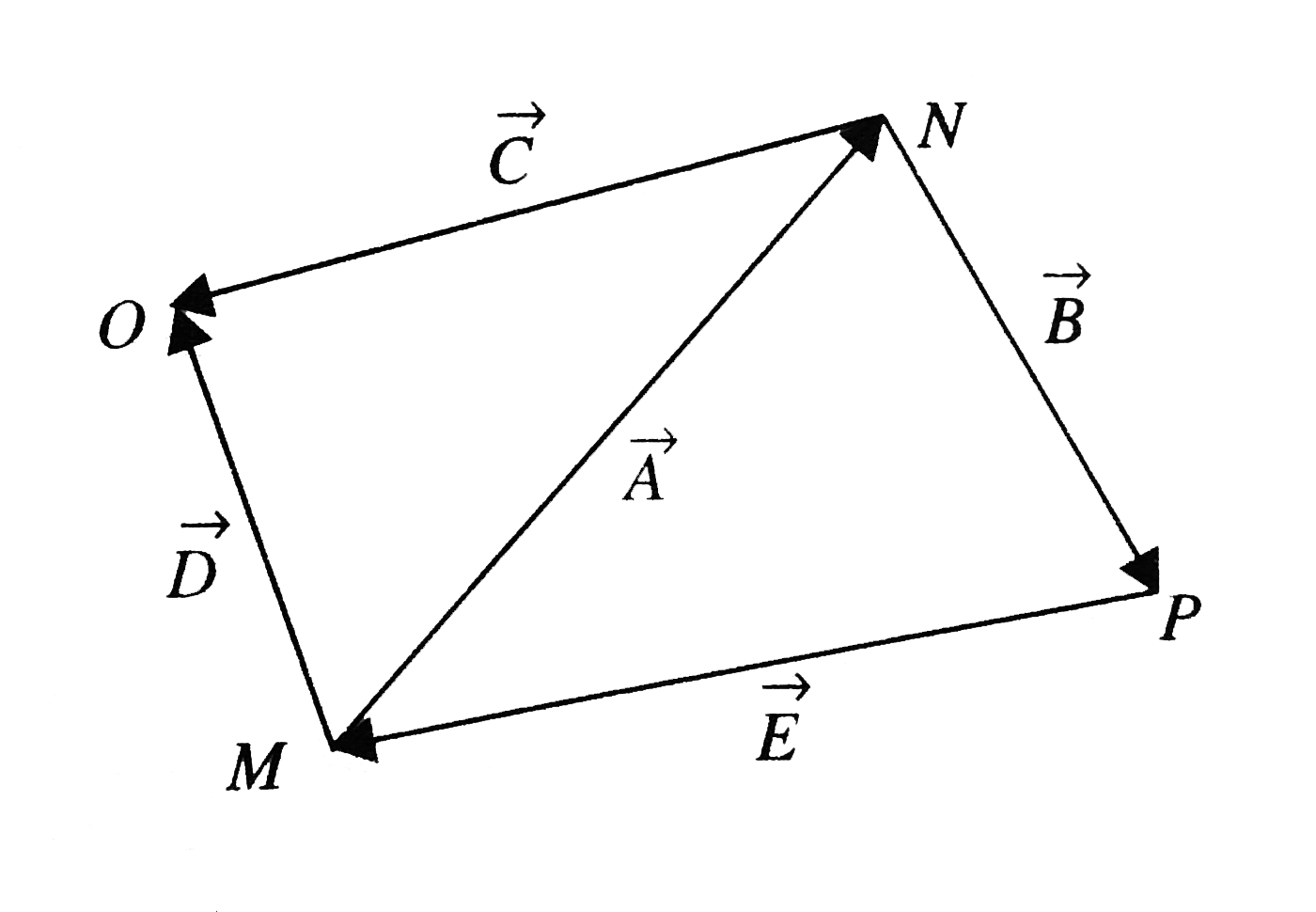 04:05View Solution
04:05View SolutionOut of the following set of forces, the rsultant of which cannot be zero?
01:21View SolutionThe resultant of two vectors `vec(A)` and `vec(B)` is perpendicular to the vector `vec(A)` and its magnitudes is equal to half of the magnitudes of vector `vec(B)` (figure). The angle between `vec(A)` and `vec(B)` is
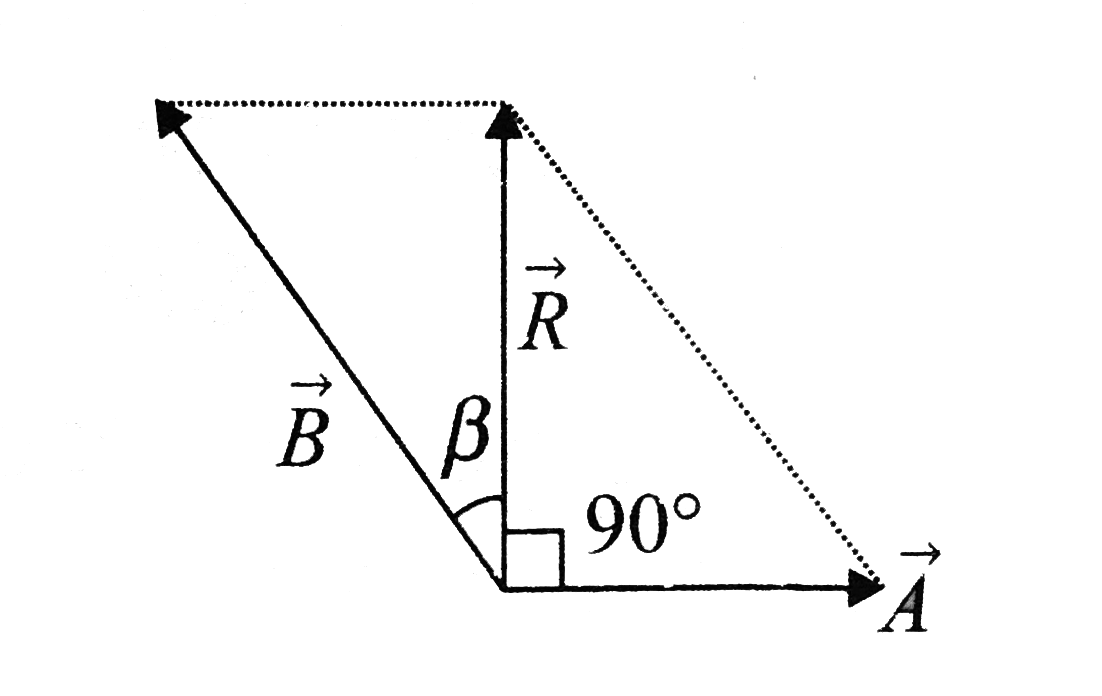 02:17View Solution
02:17View SolutionThe ratio of maximum and minimum magnitudes of the resultant of two vectors `vec(a)` and `vec(b)` is 3:1. Now, `|vec(a)|` is equal to
02:03View SolutionTwo forces, each equal to F, act as shown in (figure) Their resultant is
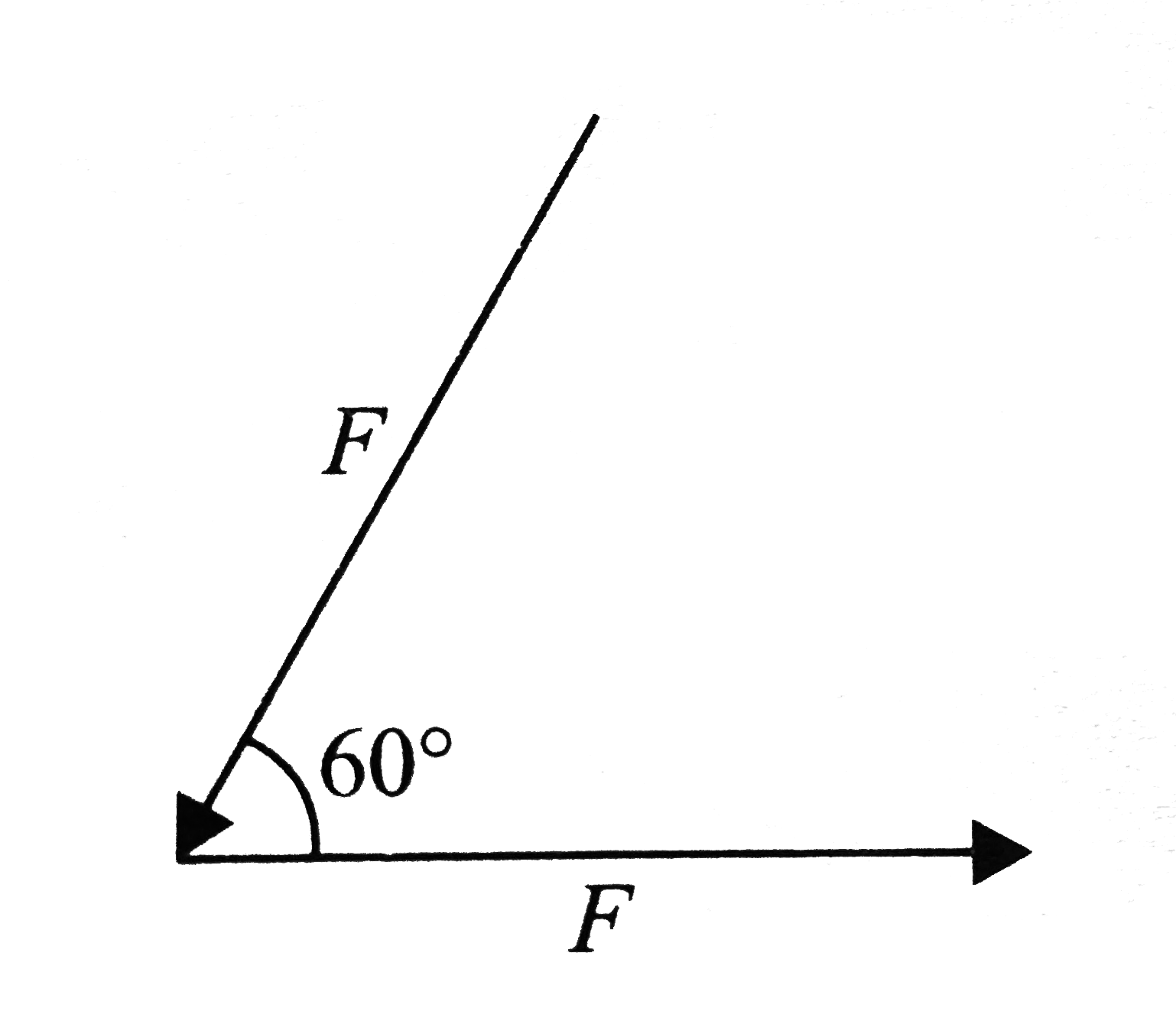 01:05View Solution
01:05View SolutionVector `vec(A)` is 2`cm` long and is `60^(@)` above the x-axis in the first quadrant. Vactor `vec(B)` is `2 cm` long and is `60^(@)` below the x-axis in the fourth quadrant. The sum `vec(A)+vec(B)` is a vector of magnitudes
05:15View SolutionWhat is the angle between two vector forces of equal magnitude such that their resultant is one-third of either of the original forces?
01:56View SolutionThe angle between `vec(A)+vec(B)` and `vec(A)xxvec(B)` is
02:00View SolutionThe projection of a vector `vec(r )=3hat(i)+hat(j)+2hat(k)` on the `x-y` plane has magnitude
01:48View SolutionIf `|vec(A)+vec(B)|=|vec(A)|=|vec(B)|` then the angle between `vec(A)` and `vec(B)`is
01:33View SolutionIf vectors `A=hati+2hatj+4hatk` and `B=5hati` represent the two sides of a triangle, then the third side of triangle has length equal to:
03:53View SolutionGiven `|vec(A)_(1)|=2,|vec(A)_(2)|=3` and `|vec(A)_(1)+vec(A)_(2)|=3`. Find the value of `(vec(A)_(1)+2vec(A)_(2)).(3vec(A)_(1)-4vec(A)_(2))`.
03:09View SolutionThree vector `vec(A)`,`vec(B)`, `vec(C )` satisfy the relation `vec(A)*vec(B)=0`and `vec(A).vec(C )=0`. The vector `vec(A)` is parallel to
02:24View SolutionIf `vec(A)=vec(B)+vec(C )`, and the magnitudes of `vec(A)`,`vec(B)`,`vec(C )` are 5,4, and 3 units, then the angle between `vec(A)` and `vec(C )` is
01:34View SolutionLet `A=hatiA cos theta+hatj A sin theta` be any vector .Another vector B which is perpendiculaar to A can be expressed as
02:24View SolutionThe angle which the vector `vec(A)=2hat(i)+3hat(j)` makes with the y-axis, where `hat(i)` and `hat(j)` are unit vectors along x- and y-axis, respectively, is
02:10View SolutionGiven `vec(P)=3hat(i)-4hat(j)`. Which of the following is perpendicular to `vec(P)`?
01:11View SolutionIn going from one city to another, a car travels 75`km` north, 60`km` north-west and 20`km` east,The magnitude of displacement between the two cities is `(take1//sqrt(2)=0.7)`
03:30View SolutionWhat is the angle between `vec(A)` and `vec(B)`, If `vec(A)` and `vec(B)` are the adjacent sides of a parallelogram drwan from a common point and the area of the parallelogram is `AB//2`?
01:15View SolutionTwo vectors `vec(a)` and `vec(b)` are such that `|vec(a)+vec(b)|=|vec(a)-vec(b)|`. What is the angle between `vec(a)` and `vec(b)`?
02:11View SolutionGiven `vec(A)=4hat(i)+6hat(j)` and `vec(B)=2hat(i)+3hat(j)`. Which of the following
02:34View SolutionGiven `vec(A)=2hat(i)+phat(j)+qhat(k)` and `vec(B)=5hat(i)+7hat(j)+3hat(k)`. If `vec(A)||vec(B)`, then the values of p and q are, respectively,
02:15View SolutionIf `vec(A)` is perpendicular to `vec(B)`, then
02:00View SolutionIf the angle between the vectors `vec(a)` and `vec(b)` is an acute angle, then the diffrence `vec(a)-vec(b)` is
02:29View SolutionGiven that `vec(A)+vec(B)=vec(C )`. If `|vec(A)|=4, |vec(B)|=5` and `|vec(C )|=sqrt(61)`, the angle between `vec(A)` and `vec(B)` is
01:46View SolutionIf `vec(b)=3hat(i)+4hat(j)` and `vec(a)=hat(i)-hat(j)` the vector having the same magnitude as that of `vec(b)` and parallel to `vec(a)` is
01:56View SolutionChoose the wrong statement.
04:02View SolutionWhat displacement at an angle `60^(@)` to the x-axis has an x-component of 5`m`? `hat(i)` and `hat(j)` are unit vector in x and y directions, respectively.
03:25View SolutionMark the correct statement.
03:24View SolutionOut of the following forces, the resultant of which cannot be `10N`?
04:46View SolutionWhich of the following pairs of forces cannot be added to give a resultant force of `4N`?
01:54View SolutionIn an equilateral triangle ABC, AL, BM, and `CN` are medians. Forces along BC and BA represented by them will have a resultant represented by
03:41View SolutionThe sum of two vectors A and B is at right angles to their difference. Then
03:31View SolutionIf a parallelogram is formed with two sides represented by vector `vec(a)` and `vec(b)`, then `vec(a)+vec(b)` represents the
01:26View SolutionGiven that `vec(A)+vec(B)=vec(C )` and that `vec(C )` is perpendicular to `vec(A)` Further if `|vec(A)|=|vec(C )|`, then what is the angle between `vec(A)` and `vec(B)`
03:31View SolutionTwo forces `vec(F)_(1)=500N` due east and `vec(F)_(2)=250N` due north have their common initial point. `vec(F)_(2)-vec(F)_(1)` is
01:56View SolutionFind the resultant of the three vectors `vec(OA), vec(OB)` and `vec(OC)` shown in figure. Radius of the circle is R.
 03:01View Solution
03:01View SolutionTwo vectors `vec(a)` and `vec(b)` are at an angle of `60^(@)` with each other . Their resultant makes an angle of `45^(@)` with `vec(a)` If `|vec(b)|=2`unit , then `|vec(a)|` is
02:42View SolutionThe resultant of two vectors `vec(P)` and `vec(Q)` is `vec(R)`. If `vec(Q)` is doubled then the new resultant vector is perpendicular to `vec(P)`. Then magnitude of `vec(R)` is :-
04:06View SolutionA vector `vec(A)` When added to the vector `vec(B)=3hat(i)+4hat(j)` yields a resultant vector that is in the positive y-direction and has a magnitude equal to that of `vec(B)`. Find the magnitude of `vec(A)`.
02:16View SolutionIN the figure shown ,ABCDEF is a regular hexagon . What is the of `AB+AC+AD+AE+AF`?
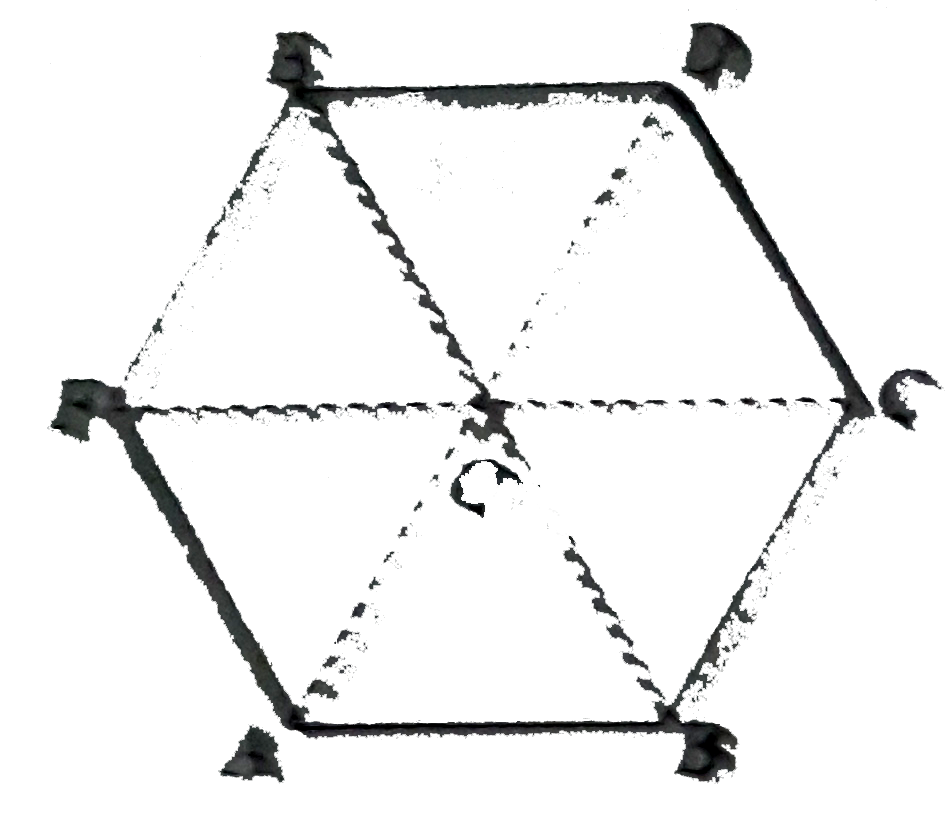 02:05View Solution
02:05View SolutionIn a two diamensional motion of a particle, the particle moves from point A, with position vector `vec(r )_(1)` to point B, with position vector `vec(r )_(2)`. If the magnitudes of these vectors are, respectively, `vec(r )=3` and `r_(2)=4` and the angles they make with the x-axis are `theta_(1)=75^(@)` and `theta_(2)=15^(@)`, respectively, then find the magnitude of the displacement vector. `
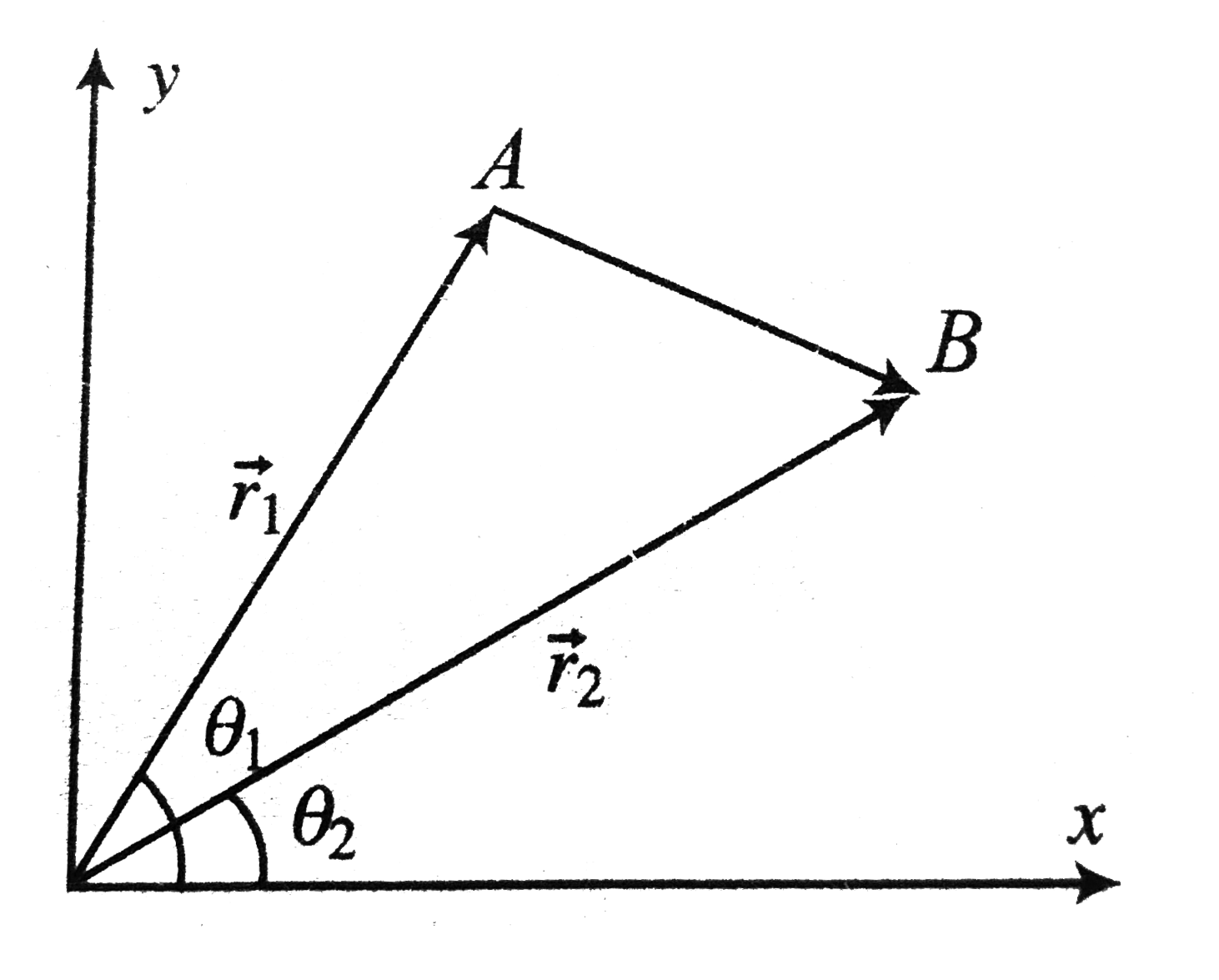 02:23View Solution
02:23View SolutionThe sum of two forces at a point is 16N. if their resultant is normal to the smaller force and has a magnitude of 8N, then two forces are
04:21View SolutionThe angle between two vector A and B is `theta`. Vector R is the resultant of the two vectors. If R makes an angle `(theta)/(2)` with A, then
02:52View SolutionThe resultant of three vectors 1,2, and 3 units whose directions are those of the sides of an equilateral triangle is at an angle of
06:08View SolutionA unit vector along the incident ray of light is `hat(i)`. The unit vector for the corresponding refracted ray of light is `hat(r ).hat(n)`, a unit vector normal to the boundary of the medium and directed towards the incident medium. If `mu` is the refractive index of the medium, then snell's law (second law) of refraction is
02:01View SolutionThe components of a vector along the x- and y- directions are `(n+1)` and 1, respectively. If the coordinate system is rotated by an angle `theta=60^(@)`, then the components change to `n` and 3. The value of `n` is
03:23View SolutionTwo point masses 1 and 2 move with uniform velocities `vec(v)_(1)` and `vec(v)_(2)`, respectively. Their initial position vectors are `vec(r )_(1)` and `vec(r )_(2)`, respectively. Which of the following should be satisfied for the collision of the point masses?
02:17View Solution
Exercise Single Correct questions and complete solutions for chapter VECTORS of CENGAGE PHYSICS (ENGLISH) of Class 11
